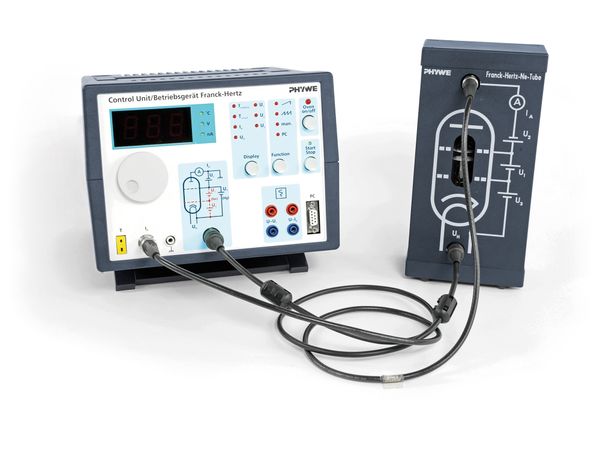
Technical data Franck-Hertz experiment with a Ne-TubeArticle no: P2510315   Principle Electrons are accelerated through a gas of neon atoms. As the electrons collide with the neon atoms, they transfer energy. However, energy transfer only occurs when the electrons have enough energy to excite the neon atoms to a higher energy state. This results in a drop in the current, which is detected as peaks on a voltage-current graph. The neon atoms then emit light as they return to their ground state, producing visible spectral lines. The excitation energy of neon is determined from the distance between the equidistant minima of the electron current in a variable opposing electric field. This experiment provides direct evidence of quantized atomic energy levels. Benefits
Tasks
Learning objectives
Scope of delivery
| |||||||||||||||
Robert-Bosch-Breite 10 – 37079 Göttingen – Germany
www.phywe.com

